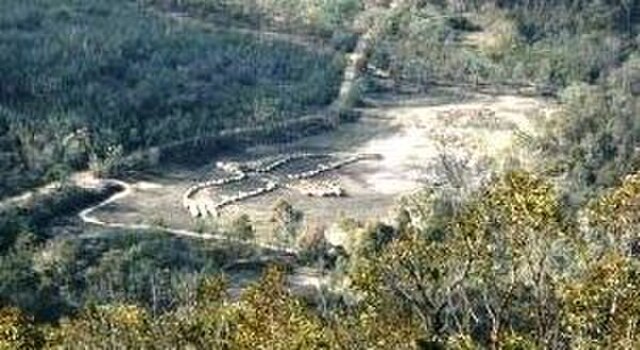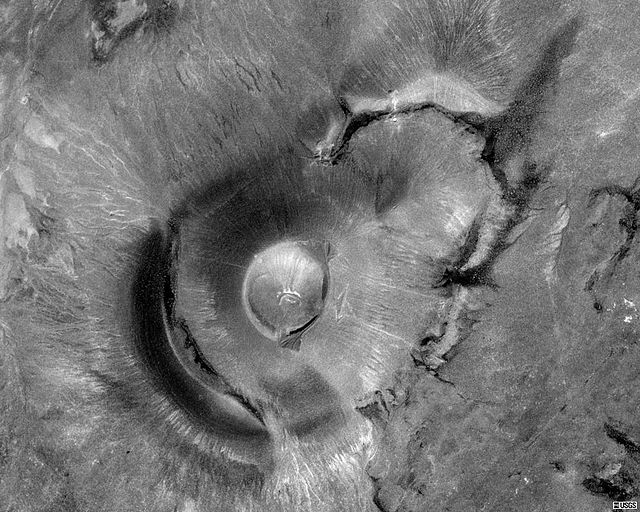Robert Smithson was an American artist known for sculpture and land art who often used drawing and photography in relation to the spatial arts. His work has been internationally exhibited in galleries and museums and is held in public collections. He was one of the founders of the land art movement whose best known work is the Spiral Jetty (1970).
Robert Smithson
Robert Smithson, Spiral Jetty in 2004, Rozel Point, Great Salt Lake, Utah.
Robert Smithson, Broken Circle/Spiral Hill, Emmen, the Netherlands
Bingham Copper Mine, Bingham, Utah
Land art, variously known as Earth art, environmental art, and Earthworks, is an art movement that emerged in the 1960s and 1970s, largely associated with Great Britain and the United States but that also includes examples from many countries. As a trend, "land art" expanded boundaries of art by the materials used and the siting of the works. The materials used were often the materials of the Earth, including the soil, rocks, vegetation, and water found on-site, and the sites of the works were often distant from population centers. Though sometimes fairly inaccessible, photo documentation was commonly brought back to the urban art gallery.
Time Landscape by Alan Sonfist, at LaGuardia and Houston Streets in Manhattan, 1965-present
Museum paper board left on the bank of the river for 4 days. By Jacek Tylicki, S.W. of Lund, Sweden, 473 X 354 mm. 1981
Bunjil, a geoglyph at the You Yangs, Lara, Australia, by Andrew Rogers. The creature has a wing span of 100 metres and 1500 tonnes of rock were used to construct it.
Satellite view of Roden Crater, the site of an Earthwork in progress by James Turrell, outside Flagstaff, Arizona








